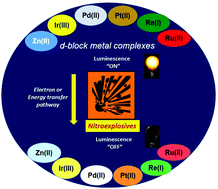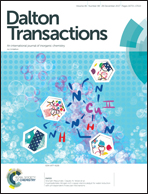Development of luminescent sensors based on transition metal complexes for the detection of nitroexplosives
Abstract
The detection of chemical explosives is a major area of research interest and is essential for the military as well as homeland security to counter the catastrophic effects of global terrorism. In recent years, tremendous effort has been devoted to the development of luminescent materials for the detection of explosives in the vapor, solution, and solid states with a high degree of selectivity and sensitivity and a rapid response time. Apart from the wide range of organic fluorescent chemosensors, transition metal complexes play a prominent role in the sensing of nitroaromatic explosives owing to their rich photophysical characteristics. This review briefly summarizes the salient features of the design and preparation of transition metal (Zn(II), Ir(III), Pd(II), Pt(II), Re(I) and Ru(II)) complexes/metallacycles/metallosupramolecules with emphasis on their photophysical properties, sensing behavior, mechanism of action, and the driving forces for detecting explosives and future prospects and challenges. Most of the probes that have been reported to date act as “turn-off” luminescent sensors because their emission (intensity, lifetime, and quantum yield) is eventually quenched upon sensing with nitroaromatic compounds (NACs) through photo-induced electron or energy transfer. These unique properties of transition metal complexes in response to explosives open up new vistas for the development of real world applications such as on-site detection, in-field security, forensic research, etc.

- This article is part of the themed collection: 2017 Frontier and Perspective articles


 Please wait while we load your content...
Please wait while we load your content...